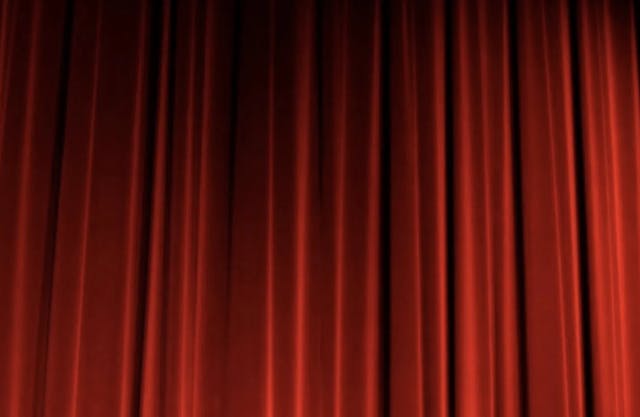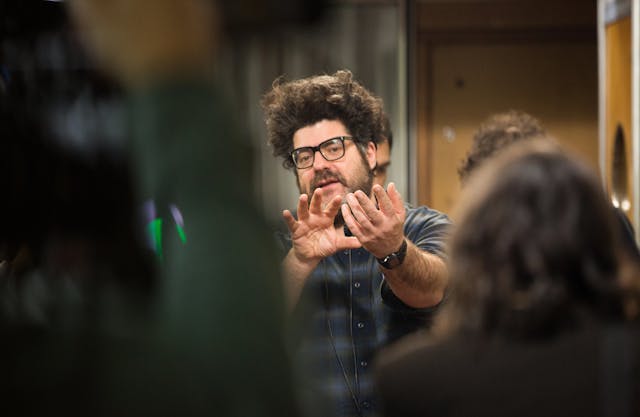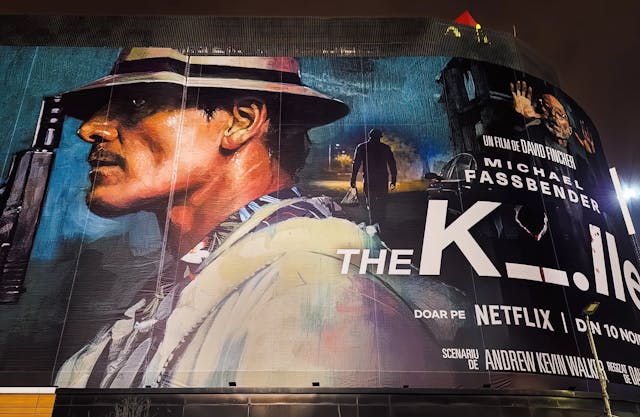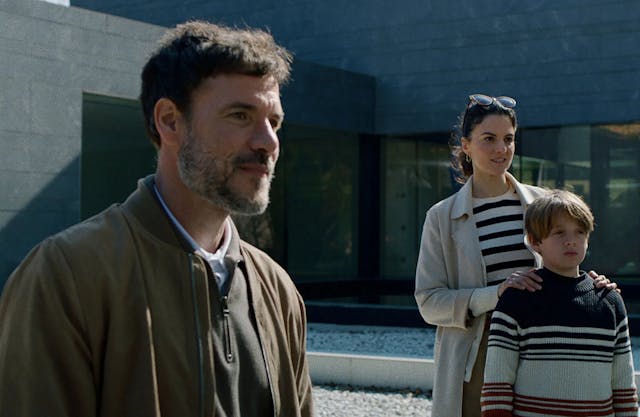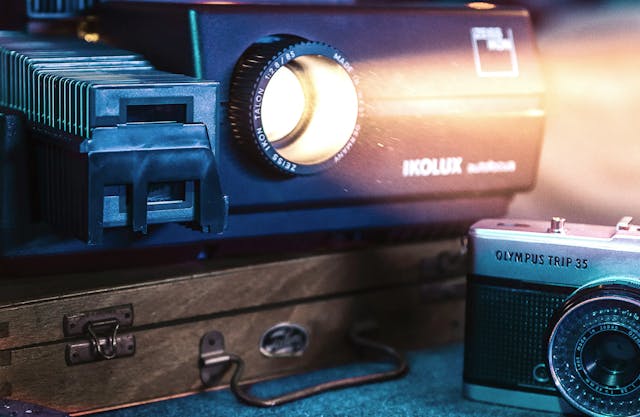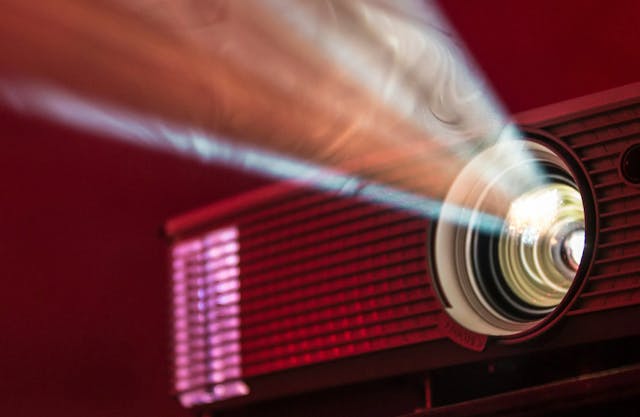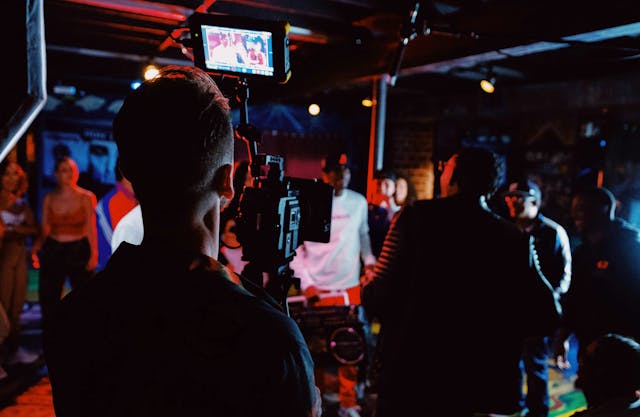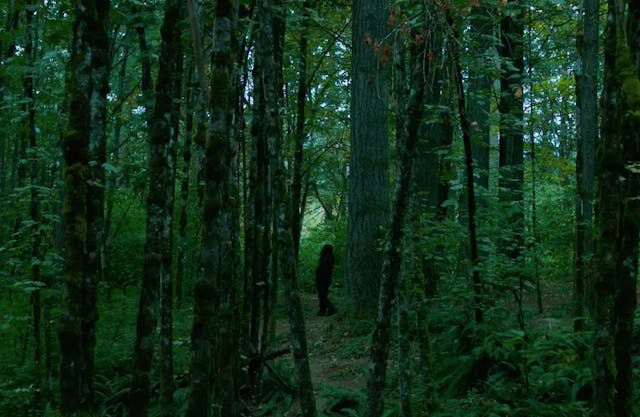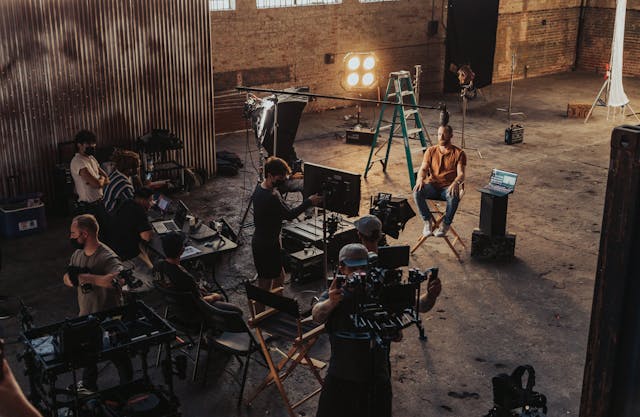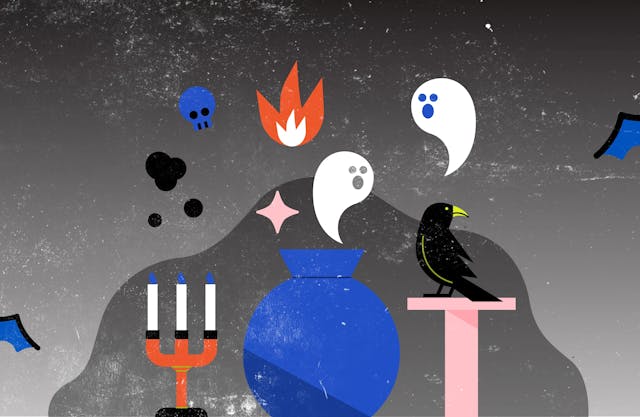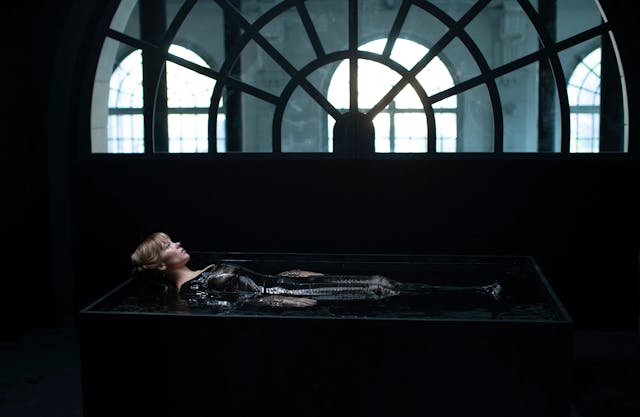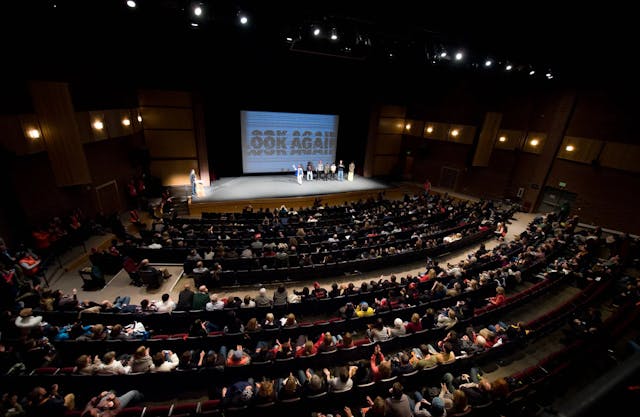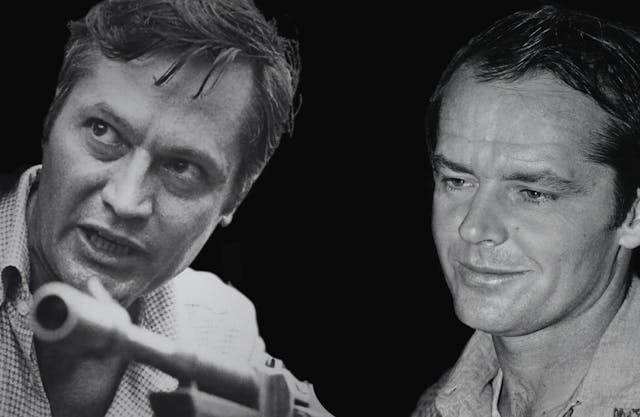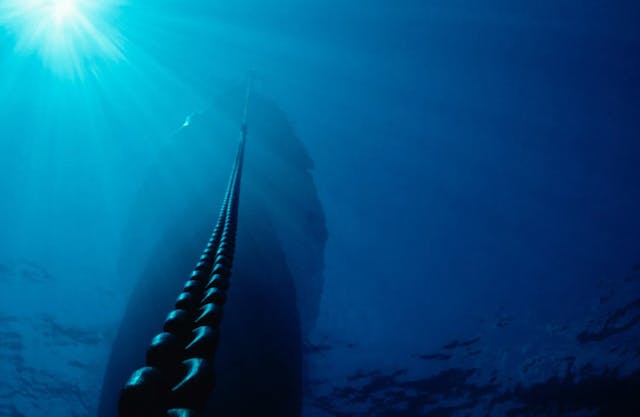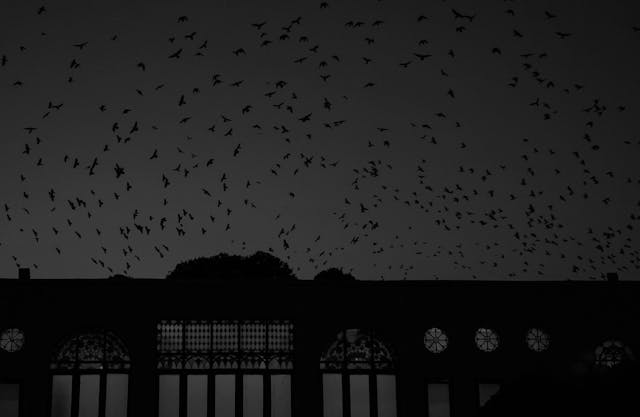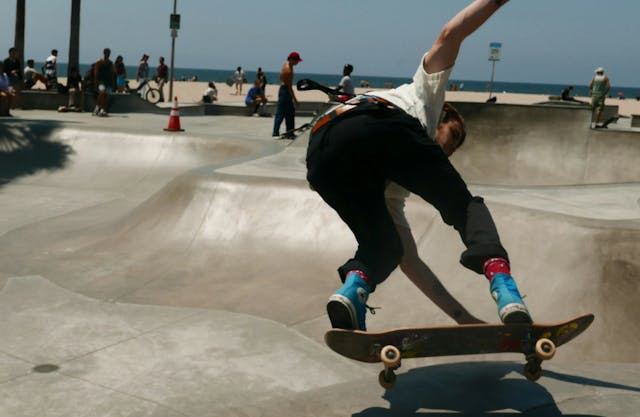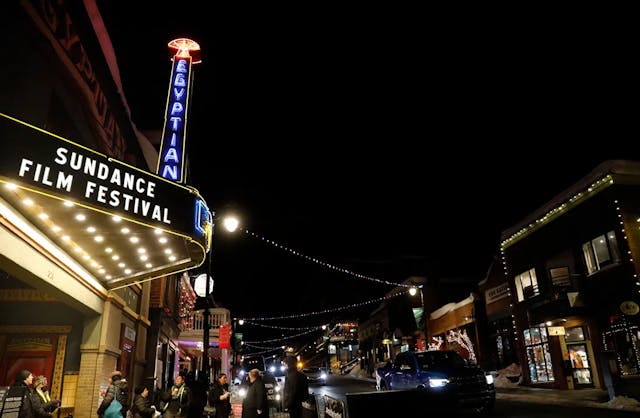10 Things We Learned About Making Indie Movies from Gregg Araki
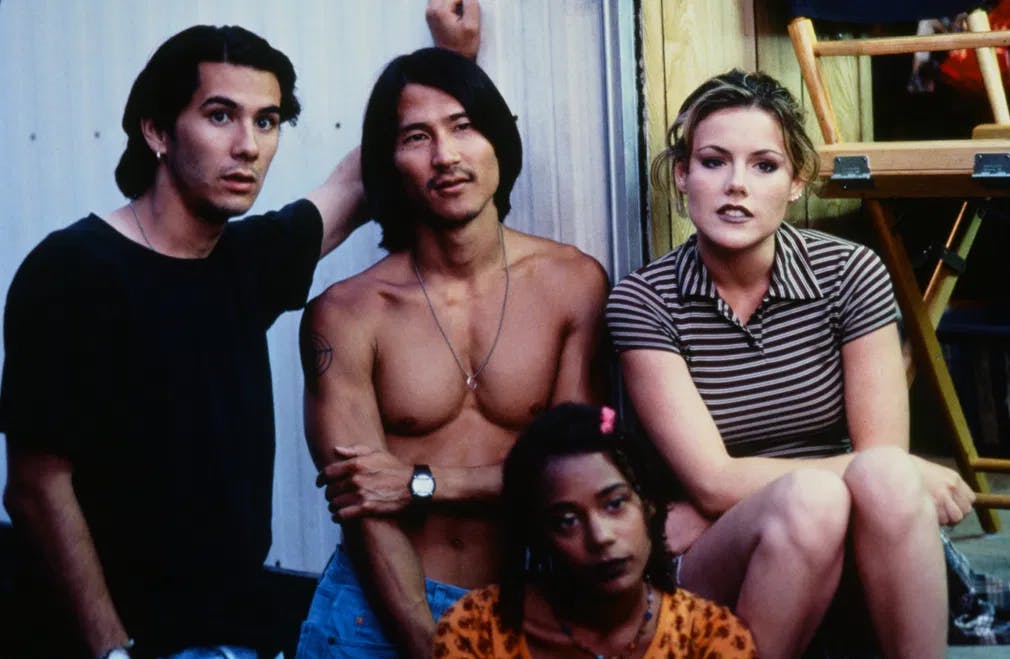
Teenage Dreams & Nightmares: James Duvall, Gregg Araki, Kathleen Robertson, and Rached True during the shooting of "Nowhere" / Photo courtesy of Strand Releasing.
A producer once told writer-director Gregg Akari that he made “gay movies that were too punk for gay people.” One look at “Nowhere,” the closing chapter of his “Teen Apocalypse” Trilogy, and you understand where the guy was coming from. Maybe he intended it as a putdown, but now it feels like a compliment. He was, and is, too risqué for the Art House.
Araki is a stalwart from the '90s inside film movement and the Queer New Wave. He is currently touring the country a propos of the 30th anniversary of the release of "Totally F***ed Up" (1993), the first entry in his "Teen Apocalypse" trilogy, which also includes "The Doom Generation" (1995), and "Nowhere" (1997).
Meet Gregg Araki
The disconcertingly youthful 64-year-old auteur still connects with young audiences in a primal way. The screening of “Nowhere” we attended at the University of Miami’s Cosford Cinema was filled with enraptured college students. Film fans of a certain age will be amazed at the caliber of talent involved. James Duval, who became Araki’s favorite actor, shares the screen with a large cast of young performers who would dominate screens in the late nineties: Christina Applegate, Heather Graham, Ryan Phillippe, Scott Caan, and an achingly young Mena Suvari in her film debut, seven years before “American Beauty” (Sam Mendes, 1999). Guillermo Diaz, from TV’s “Scandal,” is barely recognizable as a heartbroken gay teen in love with a stud in the throes of addiction.
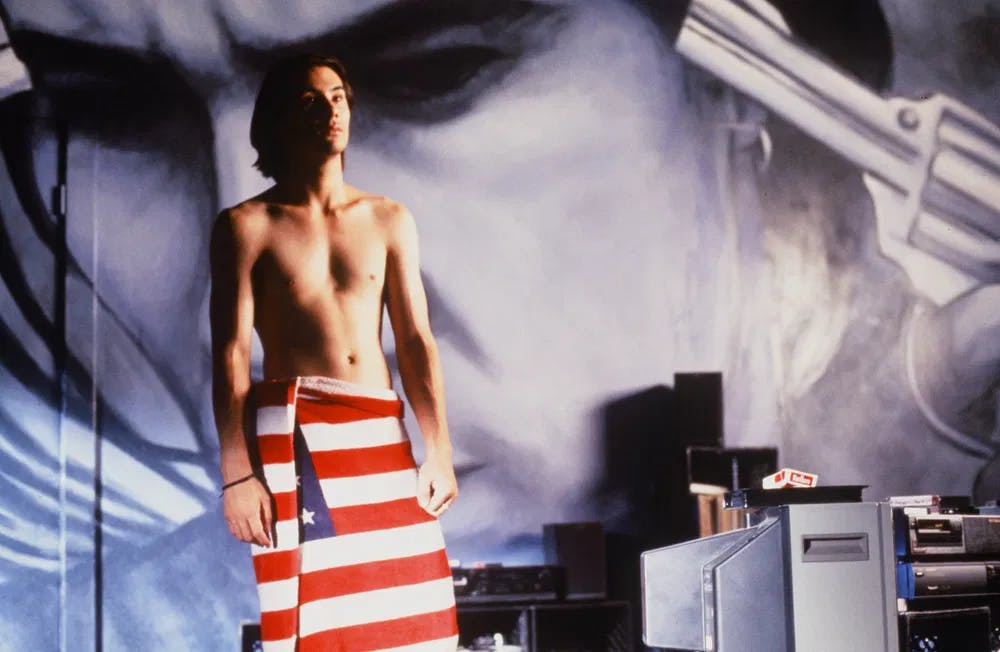
All-American boyhood: James Duval faces teen apocalypse in "Nowhere" / Photo courtesy of Strand Releasing.
"Nowhere" follows a group of teenage friends, lovers, frenemies, and adversaries as they go about their lives on a sunny day in Los Angeles. As they hook up, do drugs, and mess up, an alien invasion seems to be afoot. Yes, you read that correctly. A lizard man vaporizes a trio of mean girls on a bus stop as a harbinger of things to come. The only one who seems to be able to see them is Dark (Duval). He is an intense video freak who we meet taking a shower and fantasizing about several of his friends, including his girlfriend, Val (Rachel True), and Montgomery (Nathan Bexton), a handsome skater with heterochromia - his eyes of two different colors might be the only hetero thing about him. Things get weird fast, as many plot strands come together at an apocalyptic house party.
Araki has a fantastic eye for spotting talent and the bravery to turn down good performers who did not vibe with the material. Among the big names who auditioned for him and didn’t get “Nowhere,” there were Matt Damon and Sarah Michelle Gellar. This juicy tidbit and many more surfaced in an illuminating Q&A hosted by film critic René Rodriguez. Gossip is nice, but there were plenty of insightful ideas and experiences that will resonate with the young filmmakers of the XXI Century.
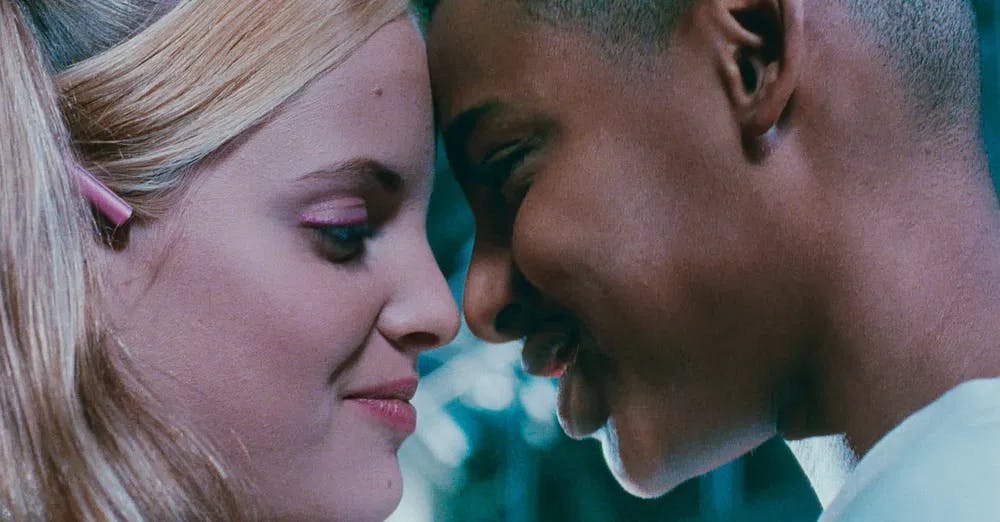
Puppy love: Mena Suvari and Joshua Gibram Mayweather in "Nowhere" / Photo courtesy of Strand Releasing.
Life Lessons From The Best Director Of Queer Indie Movies For Kids
These are some life lessons from the lively conversation with Gregg Araki and actor James Duval.
1. If you must, you can do everything yourself: In 1992, Araki premiered his breakthrough film, “The Living End.” It was his third feature, but the first one that got wide distribution. Araki wrote the screenplay, cast the actors, directed, and did all the production design, even the wardrobe. “We literally would go to the actors’ houses and go, like, ‘Okay, what do you have?’” “The Living End” and “Totally F***ed Up” had similar budgets, about $25,000 each. And they were shot the same way, on 16 millimeters, with super, super tiny crew. Sometimes just me, sometimes me and a couple of other people. James Duvall remembers how Araki approached him for the very first time in a Hollywood cafeteria, “He said, ‘Hi, I’m Greg, and I’m actually a ‘No Budget Filmmaker.’”
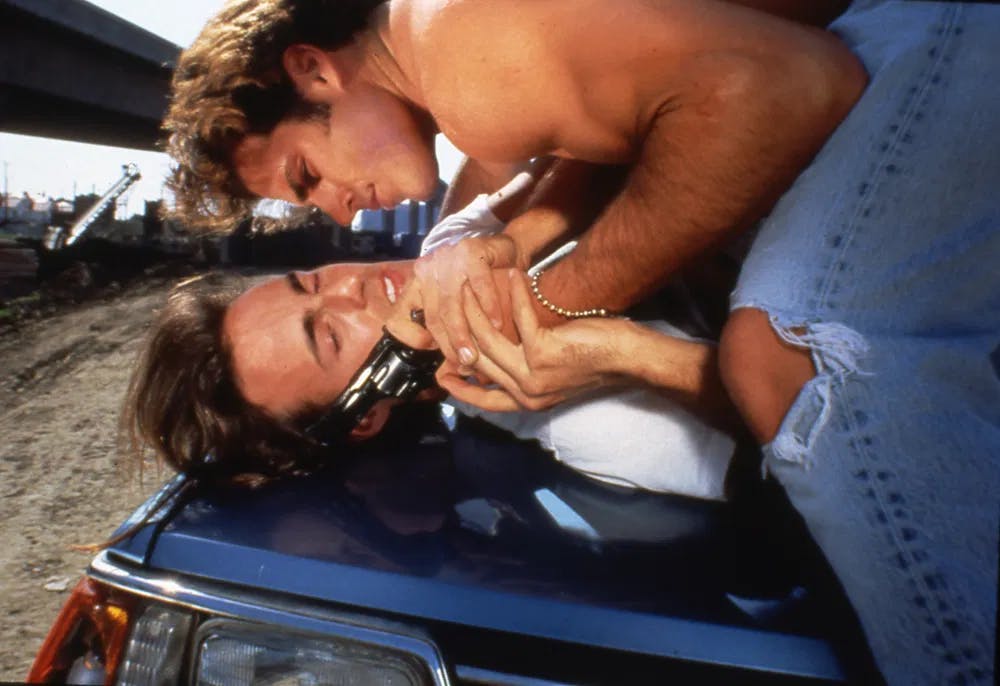
Men on the road: Mike Dytri and Craig Gilmore go to "The Living End" in Araki's breakthrough film. / Photo courtesy of Strand Releasing.
2. You can keep several projects going at the same time. Experts advise you to have at least an extra screenplay under your arm when you show your first work at film festivals. In a feat that only directors backed by a studio would dare, Araki had completed shooting a full movie when he premiered his breakthrough movie. Araki remembers, ‘“The Living End” and “Totally F***ed U” we made back to back, almost. We shot the first one in 1990 and then the other in 1991. Then I went back and edited “The Living End”. It came out, got international distribution, and became bigger than any of us thought it would be. I was busy with a lot of traveling, publicity, and press. I returned, edited ‘Totally F***ed Up’ and finished it in 1994.” Having a follow-up virtually in the can no doubt helped Araki to keep the momentum going.
3. Keep yourself independent: After two "No Budget" indie movies made for $25 thousand, Araki got enough clout to rise an echelon up in the industry for his follow-up. "The Doom Generation" is a big jump for me," says Araki. "'The Living End' and 'Totally F***ed Up' were both done running around the town doing it in our spare time. 'The Doom Generation' was my first official production with SAG actors, a casting director, a full crew, a production designer, and a DP. And it was my first movie with a bud, like, 750 thousand... It was under a million. But it was a lot of money for me then, and I shot on 35 millimeter."
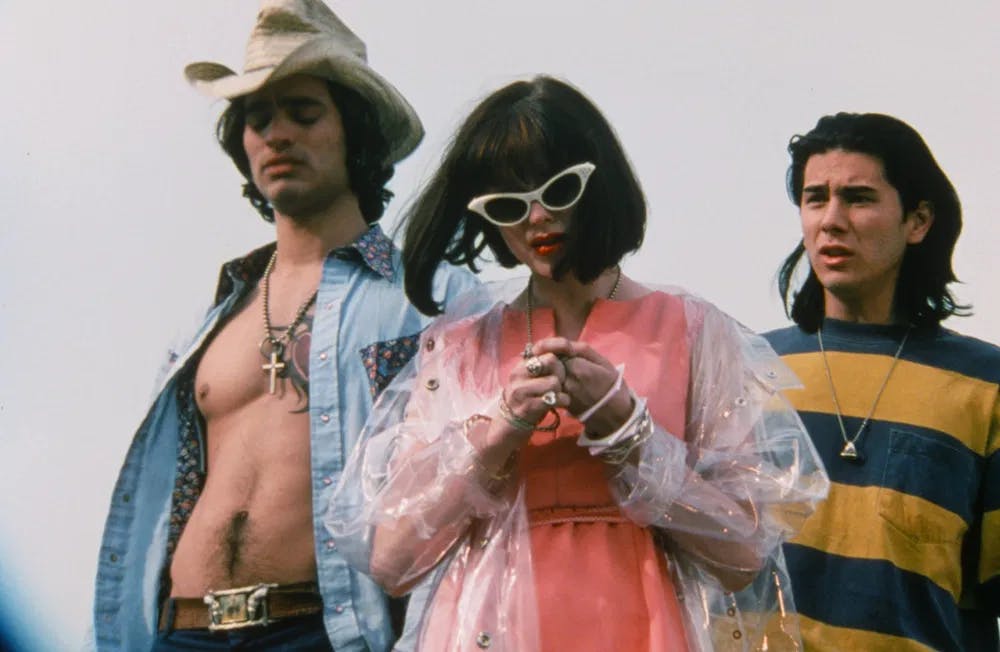
Indie super production: Araki rose to bigger budgets with the much-maligned "The Doom Generation" / Photo courtesy of Strand Releasing.
"All my life, I've tended to make lower budget projects because, according to my experience, the bigger the budget, the less control you have. If you make a Marvel movie, you must please so many people to break even that everything has to be so watered down. I know that my vision and my sensibility attracts me to projects that are always going to be a little transgressive, a little punk rock, a little queer. So I've always made movies, usually in the one, sometimes $2 million range. I've never films more expensive than that".
4. Need inspiration? Look around you. Araki’s movies are very much of their time and now offer an invaluable time capsule. “In the late ‘80s and early ‘90s, AIDS was such a huge holocaust for my generation, and it was very much of an all-consuming issue….Both “The Living End” and “Totally F***ed Up” are very much about that.” The first one follows a gay hustler and a film critic, both HIV-positive, on a nihilist road trip to oblivion. Distributors promoted it as “The gay ‘Thelma & Louise,’” much to Araki’s chagrin.
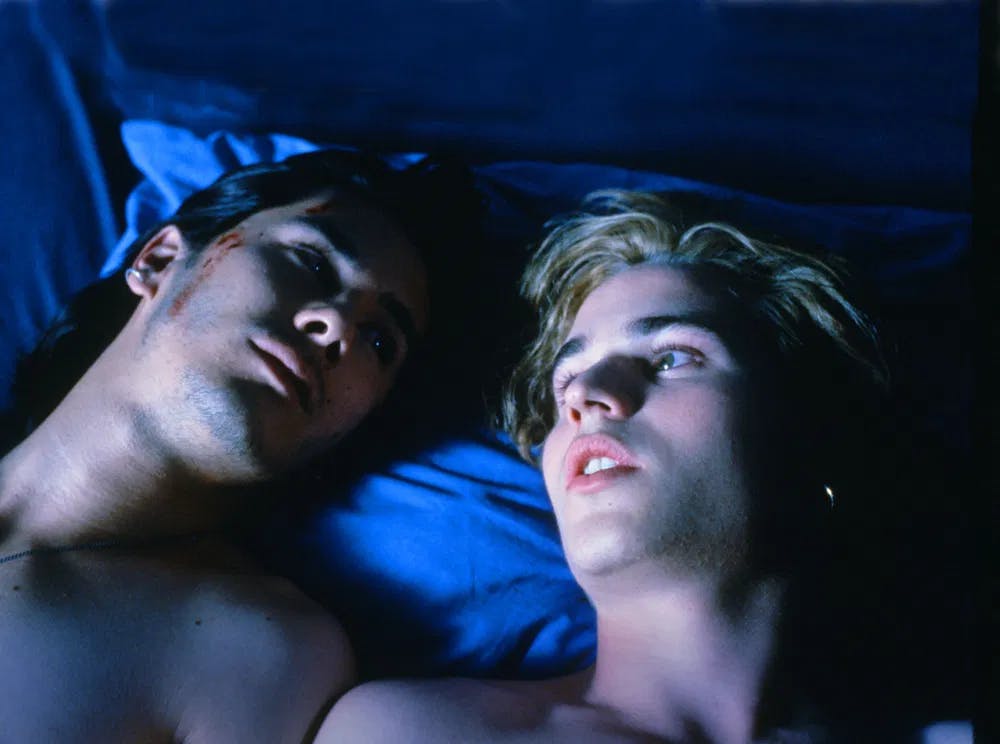
Striking a hit for queer representation: Duval and Nathan Bexton find true love in "Nowhere" / Photo courtesy of Strand Releasing.
With “Totally F***ed Up,” Araki cast his eyes toward the new generation, concentrating on the tumultuous life of a close-knit group of six queer teen friends. It was the project that introduced him to Duvall, who pretty much has appeared in every movie he has done since then. “I kind of make these tiny movies that are kind of like queer John Hughes films,” he said while pitching the movie to Duval. The young actor soon received a script, which felt like lightning striking. “I fell in love with it immediately” - says Duval -. “To be able to read something that I identified with, it’s kind of like when you watch movies or listen to songs that capture something in you that you hadn’t heard or seen before. You hadn’t quite seen it portrayed like that before, and it becomes your favorite song or your favorite movie. His scripts very much became that for me.”
5. Maybe the key to your movie is in your favorite classic: “I love ‘Masculine Feminine.’ It’s one of my favorite movies. So I want to make “Totally F***ed Up” as a sort of homage to the Godard film, a gay-lesbian version of it for gay kids,” says Araki when asked about his influences. The 1966 film is perhaps one of the warmest films by the French New War towering figure. It follows the romantic travails of a group of young Parisians from the generation called “the children of Karl Marx and Coca-Cola,” trapped between the ideals of communism and the comforts of capitalism.
6. Yeah, about those old movies…watch them: "I went to film school in the late 70s and early 80s, and my undergraduate degree is in Film History and Film Criticism. I think film students today should do the same thing I did when I was a little whippersnapper. We saw everything. I saw everything like 'The Passion of Joan of Arc,' Kurosawa movies, Bergman movies…I saw 'Breathless' so many times and didn't understand it. And one day I saw it and said, 'Oh God, this movie fucking makes perfect sense to me now!' For me as a filmmaker, and a lot of my generation - Rick Linklater, Todd Haynes, Tarantino - even the ones who didn't go to film school, we would watch everything even if you don't understand it, even if you don't like it. Cinema is a language, and the more you're exposed to it and all of its nuances and what all the filmmakers before you have been doing for years and years and years…. this stuff becomes subconscious for you. So you sit down to write a script, and it's just part of your language. So I suggest always seeing everything and watching everything, even if it's boring or you don't like it." Any self-respecting movie buff shares this sentiment.
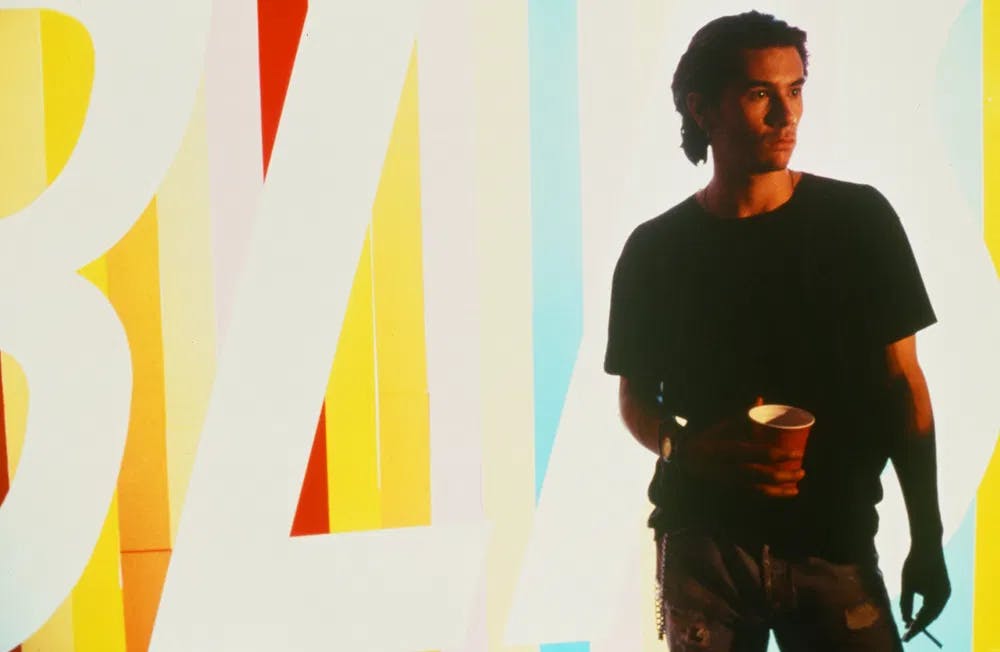
Late XXth Century American Expressionism: Duval's state of mind finds reflection in his environment in "Nowhere" / Photo courtesy of Strand Releasing.
Araki relishes the homages to the classics all over his movies. "I told the production designer and the DP and like the costume people that (in "Nowhere") everything is going to be very kind of expressionistic in a way of like the way that German Expressionist films like "Cabinet of Dr. Caligari" from the 20s…that movement is about taking characters' interior psychological states and making them visual and making them out in making their environment reflect what's going on in their heads. So that's where all the crazy rooms and all the crazy sets come from."
Araki's work proves that it is possible to honor the classics within an extremely personal film. "There are certain things that are direct homages to other things, like there's a shot of Margaret Cho in "The Doom Generation" that is a direct quotation of Eisenstein's "The Battleship Potemkin." Like certain things are like Hitchcock moments or certain this or that."
7. When in doubt, ask yourself, 'What would David Lynch do?': "I'm a huge David Lynch fan. And this was in the aftermath of 'Twin Peaks.' The pilot was released with a different ending in Europe as a feature. And I remember approaching the producer saying, I want 'Nowhere' to be essentially like a pilot, but a feature simultaneously. And we had plans to try to make "Nowhere" into a series. That would have been the craziest series ever. I had a deal at a certain point, and we did like a couple of scripts for the episodes, which got more and more crazy."
The "Nowhere" series went, well, nowhere, but Lynch remains an inspiration for Araki: "My TV shows are always like, this meets 'Twin Peaks.' Like, this is like "90210" meets 'Twin Peaks,' like, 'This Is How The World Ends' it's 'Dawson Creek' 's meets 'Twin Peaks.' 'Now Apocalypse' was like, "it's queer 'Sex and the City' meets 'Twin Peaks.' Like, it's always 'A' meets 'Twin Peaks.'"
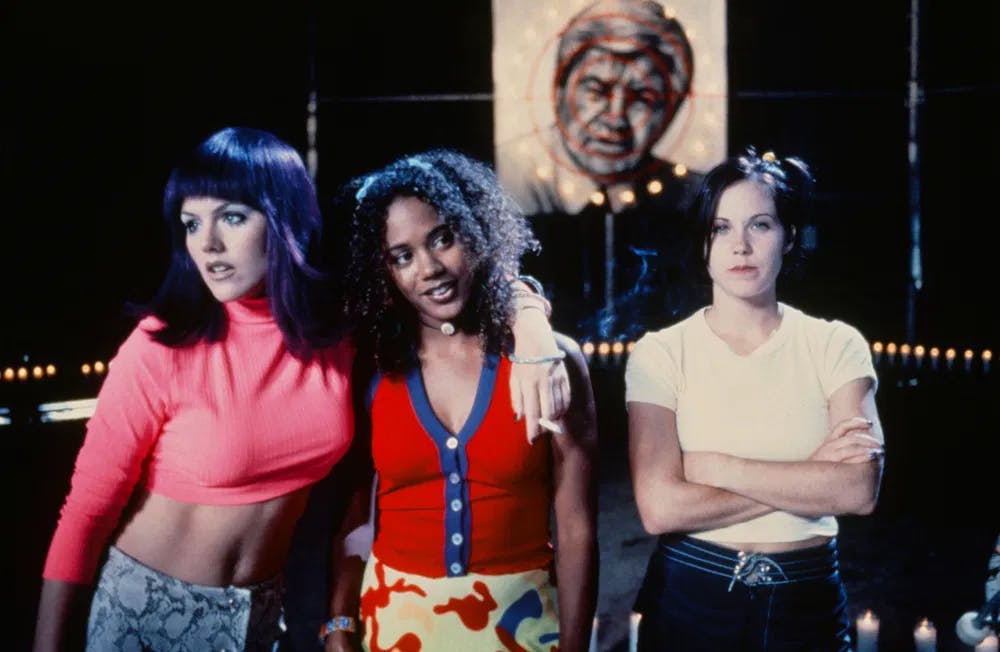
Girls just wanna have fun as the world ends: Kathleen Robertson, Rachel True, and Christina Applegate go "Nowhere" in style. / Photo courtesy of Strand Releasing.
8. Don't sweat bad reviews. "The Doom Generation" brought Araki a valuable experience beyond dealing with the logistics of a more expensive production. He learned how to deal with full industry rejection. "'It was not a big movie when it came out," he says candidly. "It was picked up by Samuel Goldwyn originally. The head of the company saw it and said, "We're not releasing this fucking movie!,' And then they sold it to Trimark. People think of it as a breakthrough, but it was probably the most controversial and the most hated of all my movies at that time. The publicist said, "Oh, the press screening didn't go well. Everybody left!"
"Roger Ebert put 'The Doom Generation' in a book - like, literally a book - of 'The Ten Worst Movies Ever Made.' And, like, one of them was the fucking ‘Doom Generation.' I'm all, like, 'Seriously? It's like, a $750,000 movie financed by French people, and you're going to put it in your book?' Roger Ebert was never a fan and hated 'The Doom Generation' so much. But then 'Mysterious Skin' came out in 2004, and literally, his review was like a five-star review, but he treated it like I was a brand new filmmaker fresh out of Sundance, like I had never made a movie before. There was no reference to anything I'd ever done."
9. Enjoy critical vindication when it comes. The restored versions of the “Teen Apocalypse Trilogy,” backed by Strand Releasing, debuted earlier this year streaming on the Criterion Channel. Araki let slip the news that the home video boutique label will put out a box set with the three movies and lots of extras sometime in 2024.
10. TV can be great….but it’s not pain-free: Araki loves TV, and it shows. You can feel it in how he speaks about “Twin Peaks.” He is up to date on current hits, with salty asides to phenomenons like “Euphoria” - “It’s great if you enjoy it, but it’s like a dirge” -. Hold on to the hate mail, Zendaya stans. He is not a snob. He fesses up to his devotion to nineties teen soaps like “Beverly Hills 90210” and “Melrose Place.” It is not by chance that Kathleen Robertson is a recurrent female lead in films. Other alumni from Aaron Spelling productions, like Shannen Doherty, John Enos III, and Tracy Lords, appear in “Nowhere” for cameos.
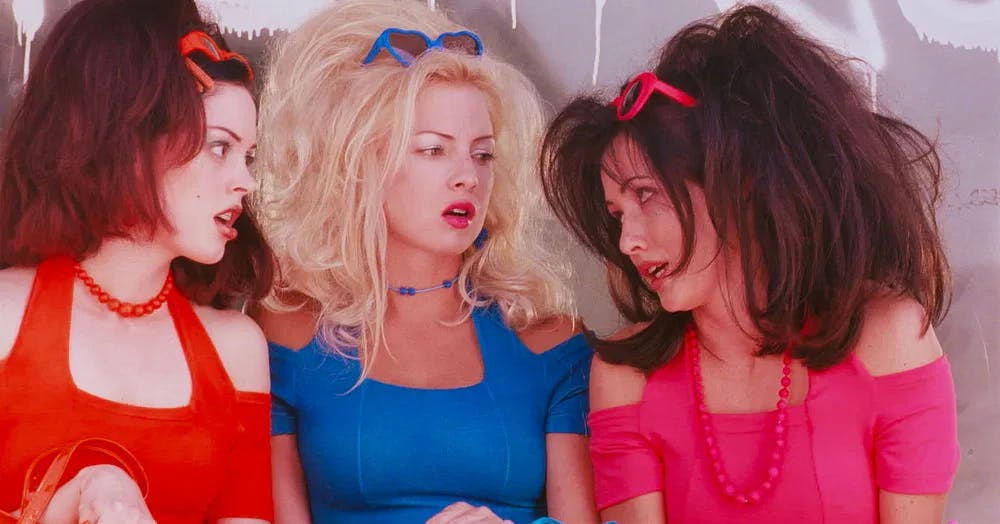
It's the screen that has gotten big: "Beverly Hills 90210" and "Melrose Place" alumni Rose McGowan, Traci Lords, and Shannen Doherty cameo in "Nowhere" / Photo by Strand Releasing.
Araki is not just a viewer. Check out his filmography, and you’ll see he has worked as director-for-hire in episodes of “American Crime,” Riverdale,” “Monster: The Jeffrey Dhamer Story” and “American Gigolo.” Don’t think of him as a gun for hire. He also has done series where his visions are the driving force, like the recent “Now Apocalypse” (2019). “That was very low-budget, indie-like, like one of my movies, but still, it was a million per episode, which is a big budget for me. We shot the whole show in 40 days, so it was like making a long indie movie.” For some perspective, bear in mind the budget for “Mysterious Skin” was 1 million, and that’s one of Araki’s most expensive movies.
Still, the TV industry is fraught with heartache. In 1999, Araki did a pilot for MTV titled “This Is How The World Ends.” “It’s ‘Dawson’s Creek’ meets ‘Twin Peaks,’” chimes in the director, true to form. The network did not pick it up, and the pilot was not officially released in any form, but somehow, it ended up in torrent sites. “I don’t know who cut it, but the copy (in torrent sites) is incorrect. I never watched the whole thing, but it has something wrong. It’s cut in a really weird way. We would have to remaster it, like with The Apocalypse Trilogy.”
What Happens After The World Ends
Araki counts with 13 feature films in his filmography, including "Smiley Face" (2007), cult classic stoner comedy with Anna Faris. His last proper film was "White Bird in a Blizzard" (2014). The family drama stars Shailene Woodley as a teenage girl dealing with the fallout of her mother's dissapearance. The movie has a stellar cast, which includes Eva Greene, Angela Basset and Christopher Meloni. Alas, it failed to gain traction with critics and wide audiences alike.
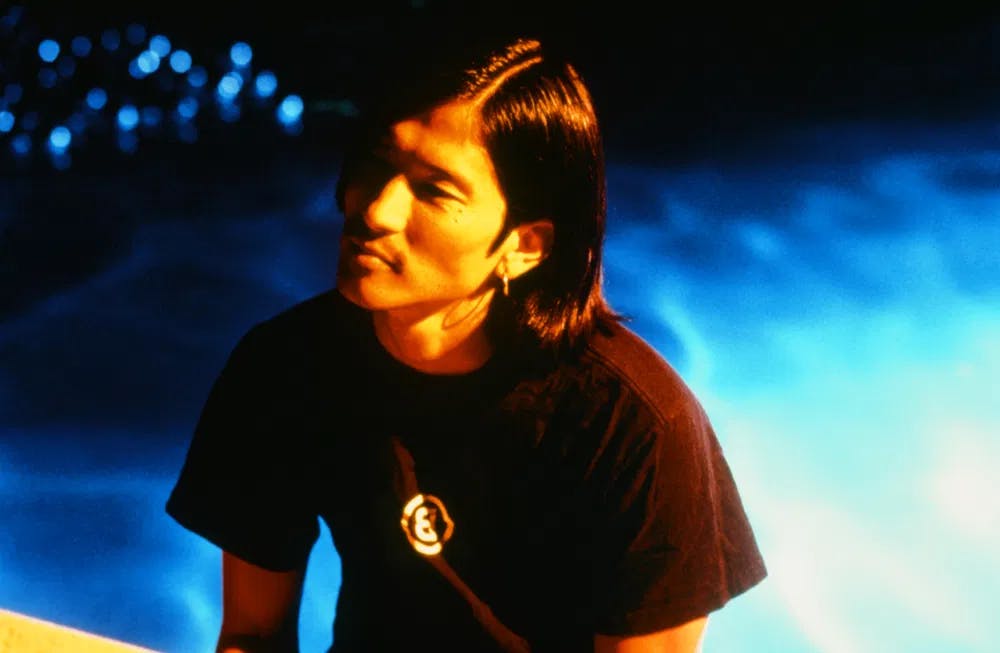
Forever Young: Araki in the mid-nineties, during the shooting of "Nowhere." Now, at 64, he does not look much different. / Photo courtesy of Strand Releasing.
It is, tragically, the last Gregg Akari film to date. In the ensuing decade, the director has been working as a TV director for hire. His most personal project then was his self-developed series, "Now Apocalypse" (2019). The plot, with hot young adults coupling and uncoupling as an apocalyptic event, seems to be taking place, making it a tantalizing 'maybe-sequel" to "Nowhere." It broadcasted on Starz but was unceremoniously canceled after just one 10-episode season.
We can only imagine what would have happened if "Now Apocalypse" had continued. As it stands, it joined the truncated "This Is The Way The World Ends" and a spec script for a series based on Bret Easton Ellis' novel "Less Than Zero" - already turned into a movie in 1987, with Robert Downey Jr. in a key role. Hopefully, the triumphant return of the "Teen Apocalypse" trilogy will open the suits' hearts and wallets to let Akari raise some hell on the big screen again.
* Check out "Nowhere" in theaters now, soon in UHD Home video, DVD and Blue Ray formats.
Want to get an email when we publish new content?
Subscribe today